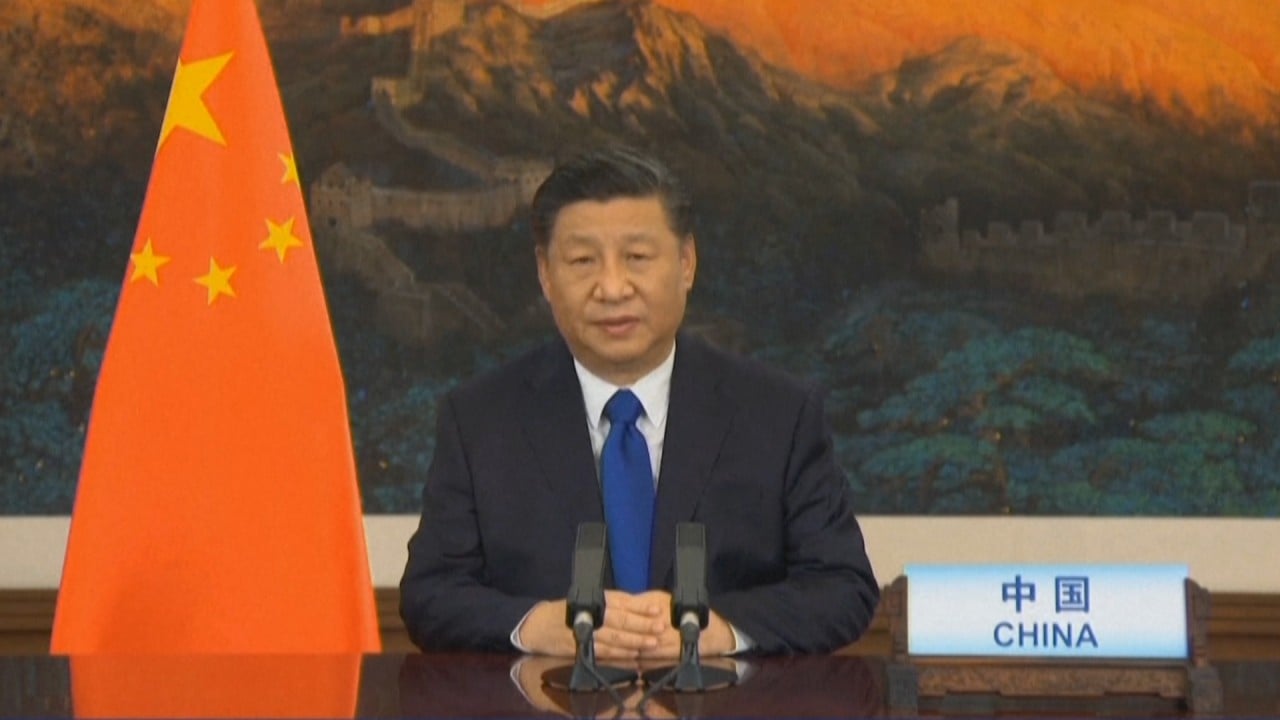
Climate change: China’s energy regulator proposes target of 40 per cent renewables by 2030
- NEA also calls for share of power generated by non-hydro renewable sources to be raised to 25.9 per cent, in draft policy document
- Analysts disagree on whether the country could meet the goals within a decade
China’s energy regulator has proposed that the share of renewables in electricity generation be increased to 40 per cent by 2030 to meet the country’s climate targets – up from 28.2 per cent last year.
The National Energy Administration (NEA) also called for the share of power generated from non-hydro renewable sources to be raised to 25.9 per cent by 2030 – from 10.8 per cent last year, according to a draft policy document.
The document was sent to local energy bureaus, development and reform commissions, and several grid corporations on Friday for consultation until February 26.
The NEA document said a target of 40 per cent renewables would help to meet these goals.

01:24
China to reduce carbon emissions by over 65 per cent, Xi Jinping says
According to a report by two research institutes in January, if the share of non-fossil fuels went up to 26 per cent, it would mean China’s total wind and solar installed capacity would exceed 1,600GW by 2030 – far higher than the 1,200GW goal set by Xi.
The report, by the US-based Rocky Mountain Institute and the London-based Energy Transitions Commission, projected annual growth of about 110GW of non-hydropower renewables in the next decade, bringing the total installed capacity to 1,650GW by 2030 from over 530GW in 2020.
It estimated that installed capacity of wind and solar power in China would reach 870GW and 854GW, respectively, by 2030.
That compares to an estimate by China’s State Grid Energy Research Institute, that installed wind and solar capacity would reach 780GW and 840GW, respectively, by 2030 under a deep emissions reduction scenario.
China’s top climate diplomat reappointed as special envoy in ‘tailored move towards the US’
But energy experts disagreed on whether China could meet the NEA’s proposed targets within a decade.
Han Xiaoping, chief analyst with China Energy Net Consulting, was optimistic that the goal of 1,600GW of wind and solar installed capacity could be reached or even exceeded by 2030.
“The annual growth of solar power alone is expected to go beyond 100GW – it will be a fascinating time in human history with China installing so much renewable energy,” he said.
“To meet the carbon neutral pledge, China will need to … change how power is generated, with more clean energy.”
He added that some coal and gas plants would need to be retained to ensure grid stability, and coal-fired power plants could be gradually phased out.

But Lin Boqiang, director of Xiamen University’s China Centre for Energy Economics Research, said the 1,600GW target was too ambitious.
“I think the 1,200GW target mentioned by President Xi is realistic,” he said. “If the share of renewables is set too high we will need to consider how energy is used and its cost.”
China more than doubled construction of new wind and solar power plants in 2020 from a year earlier, adding about 72GW of wind power capacity and 48GW of solar power capacity. But Lin said Beijing at the same time stopped funding major renewable energy producers, and it has also said it would not subsidise new onshore wind power projects from this year.
“It’s unlikely that we’ll continue to see wind and solar power capacity increasing like it did last year,” he said.
How China’s coal power glut is clouding its carbon zero ambitions
Yang Fuqiang, a senior adviser in Beijing for US environmental group the Natural Resources Defence Council, said China should “eliminate its backward coal-fired power plants from now”.
“[China should] aim for peak carbon emissions from the coal industry during the 14th Five-Year Plan,” Yang said, referring to Beijing’s economic and social development goals up to 2025.
The NEA’s draft policy also proposed a target of 40 per cent renewables for every province in China, but some analysts said that would be difficult to meet.
“The draft proposal only gives a rough picture and such a target will be hard for some provinces to achieve,” said Han of China Energy Net Consulting. “One example is Henan province, which doesn’t have much in the way of renewable energy resources or land to build such projects.”

